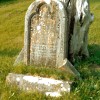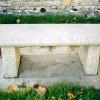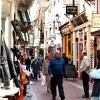When the Saxon Harold Goodwinson (King Harold II) was defeated at Senlec Ridge near Hastings in 1066, it was the beginning of William of Normandy’s conquest. Battles raged around the country before the population was fully brought under Norman rule. One such battle took place in 1067 on an area we now call the Moigne Downs, near Dorchester.
Domesday Book records land here about, including the manor of Owers, was owned by Matthew Moretania and like most of the Saxon landowners he was soon to be dispossessed of his lands including the Manor of Owers, which was granted to the Norman general le Moigne who with his troops had attacked and defeated the town of Dorchester.
The Moigne family built and settled in the Manor House of Moignes Court during the reign of King Henry III, when they were the owners of the Manor until the reign of Henry V; it is believed that originally tea nor House was thatched like Woodsford Castle. The manor passed down through Ralph, William, Henry, Joyhn, Henry and Sir John Moigne, the latter having no male issue resulting in parts of the estate being sold off; the rest passed to the Stourton family through one of the heiresses of t he Moignes.
Records from the time of the reign of Edward I (1272-1307) state that “Ralph Moyne has the Manor of Owers of the Lord the King, by sergeantry of the Royal Kitchen. His ancestors held these tenements from the time of King Henry the First by the aforesaid service.”
At an investigation held before Justices at Sherborne in 1278 William Moignes stated that the family had held the lands from the time of Henry I, in recognition of the service to the Monarch. William Moignes also claimed the right to impound anything washed up by the sea; to inflict fines for breaches of the statutory price of bread and beer, and to hold pleas of wrongful distress and to keep gallows at Winfrith and Owermoigne. This record adds that all the ancestry from time immemorial had enjoyed these privileges. The gallows stood on the way to the sea on a hill still known today as Gallows Hill; William Moigne was master of life and death in the Hundred of Winfrith.
Henry le Moigne, along with many other Knights from Dorset, was called to arms on several occasions to fight the Scots; these Knights were paid for their service by gifts of land and this added greatly to the wealth of the Moigne family.
The last of the Moignes was Sir John, who was Sheriff of Dorset in 1389. He married Joan, a daughter and heir of the Mandeviles of Marsh wood – they had two daughters but no sons. The younger daughter, Hester, married Sir William Bonvil of Somerset. In 1408 part of the Manor was purchased by John Herring Esq., Thomas Hody and Henry Gouys, but a large part passed to the Stourton family on the marriage of Sir John’s eldest daughter, Elizabeth, to Sir William Stourton.
During the reign of Henry VIII the Manor of Owers was owned by William Baron Stourton. His son Sir Charles, Lord Stourton, brought disgrace on the family while Sir Charles was involved in a lawsuit with a Mr Hartgill and his son who he lured to Stourton Castle ostensibly for a meal and to express his regrets and forgiveness. This was on the 12th of January 1557; father and son were never seen again.
Their bodies were later found buried under the floor of a cellar in the castle. During the trial of Sir Charles it was revealed that while at the table the guests were clubbed by servants and their throats cut.
Sir Charles was sentenced to hang. He appealed to Queen Mary I to make a change to the sentence, on the grounds of his quality and that he and all his family were Roman Catholics. In view of his noble birth the Queen ordered that he be hanged by a silken halter. He and four of his servants were hanged and he was buried in St Mary’s Chapel in Salisbury Cathedral.
The Stourton family owned the Manor of Owermoigne until 1703 when it was purchased by William Wake, who was later to become Archbishop of Canterbury. He sold the Manor in 1732 to Sir Theodore Janssen a wealthy man of Dutch descent who came to England in 1680. He was knighted by King William III and at the special request of George II, at the time Prince of Wales, he was made a Baronet in 1714. His son Sir Stephen was Lord Mayor of London in 1755.
William Janssen’s heiress married the Hon. Lionel Damer, third son of the Earl of Dorchester, but she died childless and in the 19th century the manor was sold to John Cree Esq. Subsequently the Cree family restored Moignes Court, a substantial part of which had been damaged by fire in the late 19th century; they re-built the church and provided a school.



